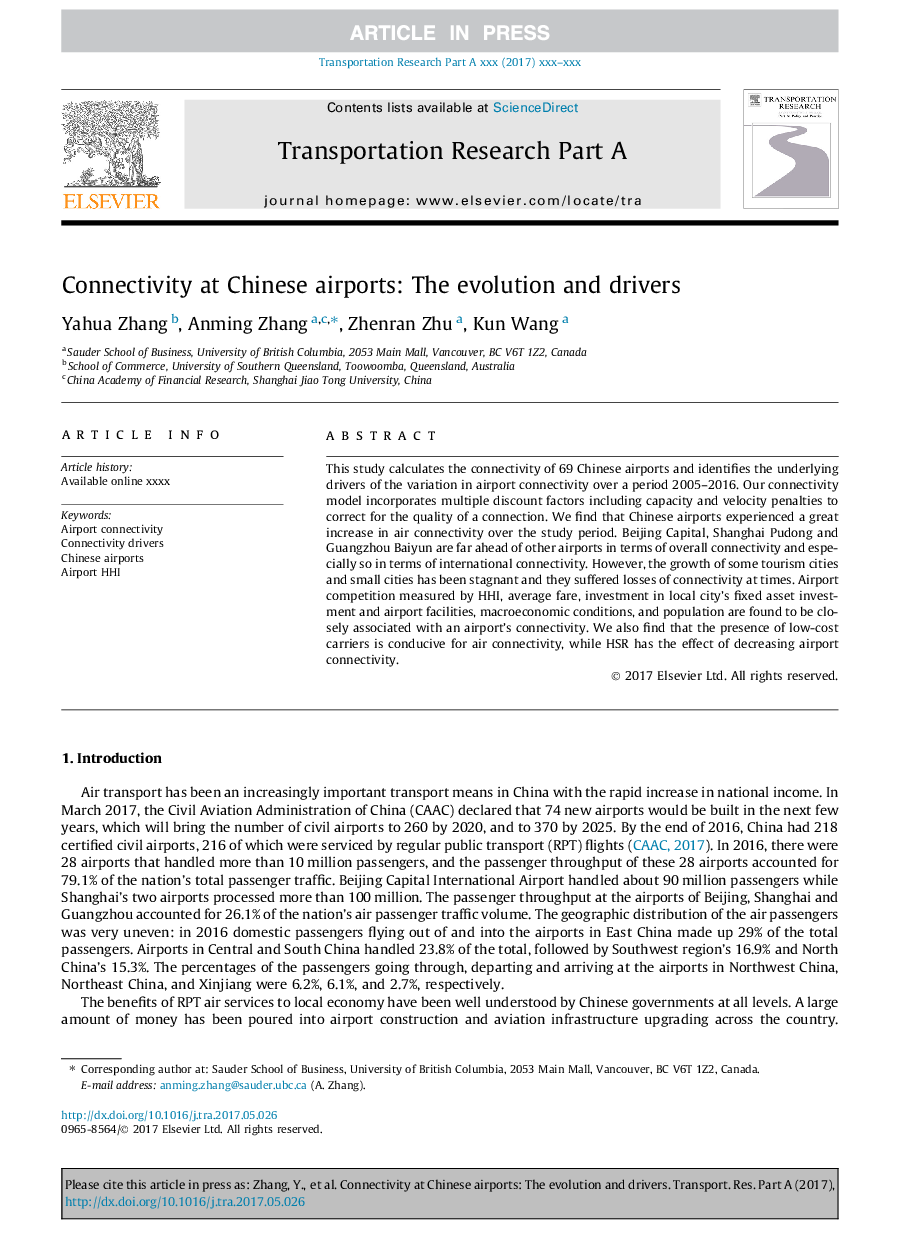| Article ID | Journal | Published Year | Pages | File Type |
|---|---|---|---|---|
| 4928900 | Transportation Research Part A: Policy and Practice | 2017 | 19 Pages |
Abstract
This study calculates the connectivity of 69 Chinese airports and identifies the underlying drivers of the variation in airport connectivity over a period 2005-2016. Our connectivity model incorporates multiple discount factors including capacity and velocity penalties to correct for the quality of a connection. We find that Chinese airports experienced a great increase in air connectivity over the study period. Beijing Capital, Shanghai Pudong and Guangzhou Baiyun are far ahead of other airports in terms of overall connectivity and especially so in terms of international connectivity. However, the growth of some tourism cities and small cities has been stagnant and they suffered losses of connectivity at times. Airport competition measured by HHI, average fare, investment in local city's fixed asset investment and airport facilities, macroeconomic conditions, and population are found to be closely associated with an airport's connectivity. We also find that the presence of low-cost carriers is conducive for air connectivity, while HSR has the effect of decreasing airport connectivity.
Keywords
Related Topics
Physical Sciences and Engineering
Engineering
Civil and Structural Engineering
Authors
Yahua Zhang, Anming Zhang, Zhenran Zhu, Kun Wang,
